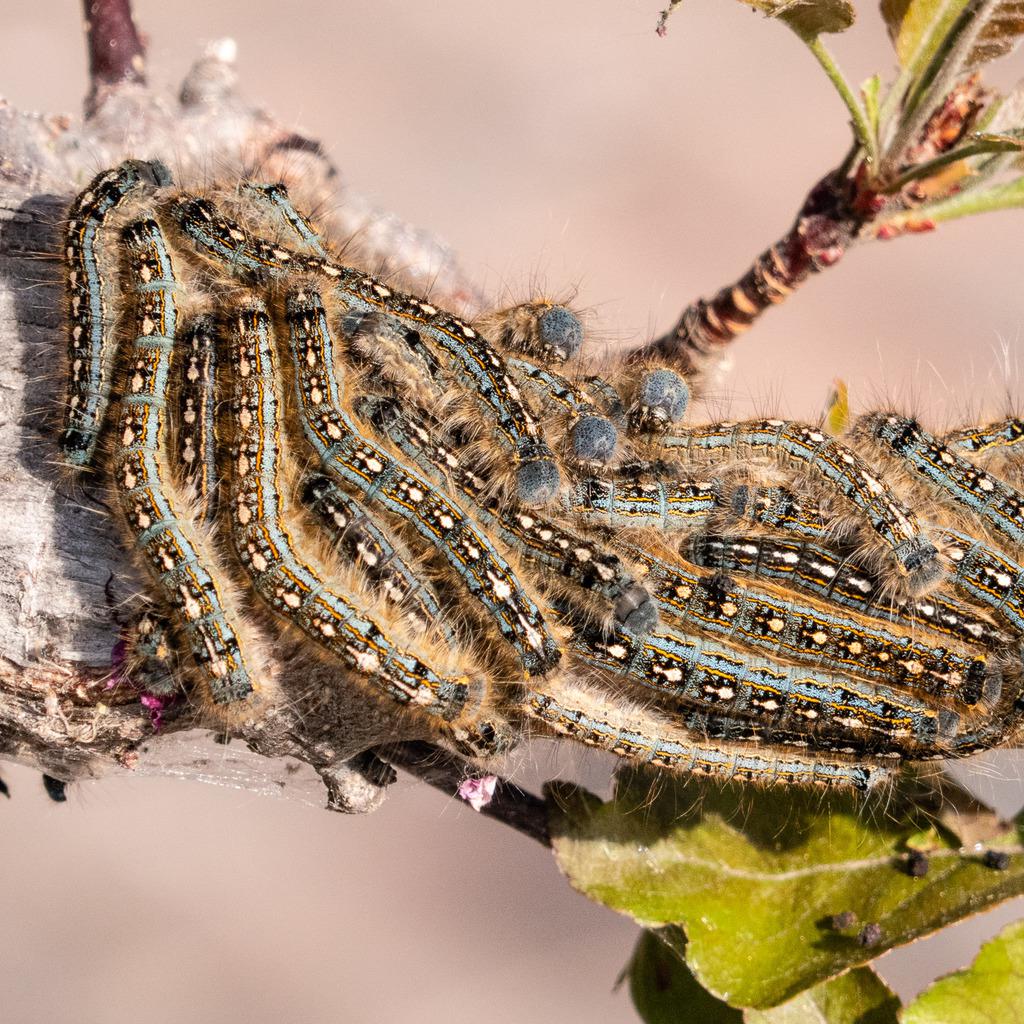Tent Caterpillars form large common silk nests (tents) in the forks of trees where the moths lay their eggs in early spring. Once the caterpillars emerge, you'll often see large bands of caterpillars feeding on the tender new leaves.
Widespread outbreaks of Tent Caterpillars occur in cities and forests across North America on a cyclical basis. They're considered a pest as they can strip all the leaves off a tree.
The caterpillars are about two inches long and black with a white stripe or spots down their back, a blue head, and often blue spots down their body. The moths range in color from dark red-brown to gray with two parallel lines on their forewings.
Could it be? Tent Caterpillars can be confused with Webworms. However, Tent Caterpillars make their nests in the forks of trees where the branches connect to the trunk. Webworms form a nest that encloses the leaves and small branches at the end of a limb. They don't affect the health of the tree.
Did you know? 50% of what Tent Caterpillars eat is lost in fecal pellets; you'll hear the pellets falling and see them on the ground around the tree.
See Also: Admiral Butterfly, Azure Butterfly, Banded Woolly Bear Caterpillar, Cabbage White, Clouded Sulphur, Compton Tortoiseshell, Great Spangled Fritillary, Hawk Moth, Monarch Butterfly, Mourning Cloak, Painted Lady, Tiger Swallowtail







